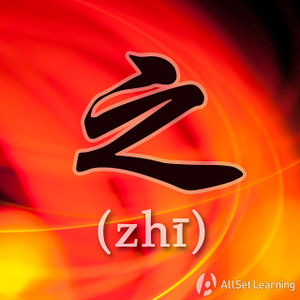Difference between revisions of "Expressing fractions with "fenzhi""
m (Text replacement - ". </span>" to ".</span>") |
|||
| Line 1: | Line 1: | ||
{{Grammar Box}} | {{Grammar Box}} | ||
| + | |||
| + | [[Category:**URGENT**]] | ||
| + | |||
分之 (fēnzhī) is used to form a fraction in Chinese. When expressing a fraction, the denominator is always said before the numerator. This pattern is also the way percentages are expressed in Chinese. | 分之 (fēnzhī) is used to form a fraction in Chinese. When expressing a fraction, the denominator is always said before the numerator. This pattern is also the way percentages are expressed in Chinese. | ||
| − | ==Structure== | + | So a 1/2 is read 二分之一 (èr fēnzhī yī), not 一分之二 (yī fēnzhī èr). 3/5 is read 五分之三 (wǔ fēn zhī sān). To say a percentage, for example, 50 percent, you would say 百分之五十 (bǎi fēnzhī wǔshí). |
| + | |||
| + | A Few Examples: | ||
| + | |||
| + | <div class="liju"> | ||
| + | |||
| + | *我 的 手机 电量 还有 <em>百分之</em> 三十 。<span class="pinyin">Wǒ de shǒujī diànliàng háiyǒu <em>bǎifēnzhī</em> sānshí.</span><span class="trans"> .</span> | ||
| + | *今年 公司 收入 增加 了 <em>百分之</em> 十 。<span class="pinyin">Jīnnián gōngsī shōurù zēngjiā le <em> bǎifēnzhī</em> shí.</span><span class="trans"> .</span> | ||
| + | *押金 要 付 <em>百分之</em> 二十 。<span class="pinyin">Yājīnyào fù <em>bǎifēnzhī</em> èrshí.</span><span class="trans"> .</span> | ||
| + | |||
| + | </div> | ||
| + | |||
| + | === Structure === | ||
<div class="jiegou"> | <div class="jiegou"> | ||
| − | Denominator + 分之 + Numerator | + | A + 是 / 占 (+ B) + 的 + Denominator + 分之 + Numerator |
</div> | </div> | ||
| − | + | === Examples === | |
| − | |||
| − | ==Examples== | ||
<div class="liju"> | <div class="liju"> | ||
| − | + | *我们 班 有 三 <em>分 之</em> 一 的 同学 是 外国 人。<span class="pinyin">Wǒmen bān yǒu sān <em>fēn zhī</em> yī de tóngxué shì wàiguó rén.</span><span class="trans">One third of our classmates are foreign students.</span> | |
| − | * 我们 班 有 三 <em>分 之</em> 一 的 同学 是 | + | *美国 人口 差不多 是 中国 人口 的 四 <em>分之</em> 一 。<span class="pinyin">Měiguó rénkǒu chàbuduō shì Zhōngguó rénkǒu de sì <em>fēn zhī</em> yī.</span><span class="trans"> .</span> |
| − | * 我们 | + | *我们 学校 四 <em>分之</em> 三 的 老师 都 是 男 老师 。<span class="pinyin">Wǒmen xuéxiào sì <em>fēn zhī</em> sān de lǎoshī dōu shì nán lǎoshī.</span><span class="trans"> .</span> |
| − | * | + | *我们 的 需求 占 整个 市场 需求 的 十 <em>分之</em> 三 。<span class="pinyin">Wǒmen de xūqiú zhàn zhěng gè shìchǎng xūqiú de shí <em>fēn zhī</em> sān.</span><span class="trans"> .</span> |
| − | * | + | *电动车 的 销量 占 新车 销量 的 八 <em>分之</em> 五 。<span class="pinyin">Diàndòngchē de xiāoliàng zhàn xīn chē xiāoliàng de bā <em>fēn zhī</em> wǔ.</span><span class="trans"> .</span> |
| + | *Trump 在 这个 州 的 支持 率 是 <em>百分之</em> 五十 七 点 四 。<span class="pinyin">Trump zài zhège zhōu de zhīchí lǜ shì <em>bǎifēnzhī</em> wǔshí qī diǎn sì.</span><span class="trans"> .</span> | ||
| + | *大 城市 年轻人 的 离婚 率 比 中小 城市 高 <em>百分之</em> 四 。<span class="pinyin">Dà chéngshì niánqīng rén de líhūn lǜ bǐ zhōng xiǎo chéngshì gāo <em> bǎifēnzhī</em> sì.</span><span class="trans"> .</span> | ||
</div> | </div> | ||
Revision as of 08:31, 24 July 2017
-
Level
-
Similar to
-
Used for
-
Keywords
分之 (fēnzhī) is used to form a fraction in Chinese. When expressing a fraction, the denominator is always said before the numerator. This pattern is also the way percentages are expressed in Chinese.
So a 1/2 is read 二分之一 (èr fēnzhī yī), not 一分之二 (yī fēnzhī èr). 3/5 is read 五分之三 (wǔ fēn zhī sān). To say a percentage, for example, 50 percent, you would say 百分之五十 (bǎi fēnzhī wǔshí).
A Few Examples:
- 我 的 手机 电量 还有 百分之 三十 。 .
- 今年 公司 收入 增加 了 百分之 十 。 .
- 押金 要 付 百分之 二十 。 .
Structure
A + 是 / 占 (+ B) + 的 + Denominator + 分之 + Numerator
Examples
- 我们 班 有 三 分 之 一 的 同学 是 外国 人。One third of our classmates are foreign students.
- 美国 人口 差不多 是 中国 人口 的 四 分之 一 。 .
- 我们 学校 四 分之 三 的 老师 都 是 男 老师 。 .
- 我们 的 需求 占 整个 市场 需求 的 十 分之 三 。 .
- 电动车 的 销量 占 新车 销量 的 八 分之 五 。 .
- Trump 在 这个 州 的 支持 率 是 百分之 五十 七 点 四 。 .
- 大 城市 年轻人 的 离婚 率 比 中小 城市 高 百分之 四 。 .
See Also
Sources and further reading
Books
- Chinese: An Essential Grammar, Second Edition (pp. 18) →buy
- New Practical Chinese Reader 3 (新实用汉语课本3) (pp. 152-3) →buy



